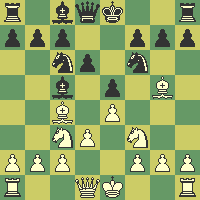
Buffalo City Championship, 1973.
White: J. Grant
Giuoco Piano.
Black: Col. Sicherman
1. e4 e5; 2. Nf3 Nc6; 3. Bc4 Bc5.
Why on earth are we playing the Giuoco Piano in the deciding game of the tournament? Well, I was teaching a chess course at the university, and Jeff Grant was one of my students. I played a double king pawn instead of my usual Caro-Kann because I felt obliged to elevate the tone of the game. Grant played the Piano because he wouldn't venture a Ruy Lopez against his instructor!
4. Nc3.
No Evans Gambit, for the same reason. Grant needed a win, so he may have been psychologically justified in playing a Pianissimo.
4... d6; 5. d3 Nf6; 6. Bg5?

A beginner's mistake: pinning the king's knight before the opponent has castled.
6... Be6!
The right way. I propose to strengthen my center and open a line for attacking. White should refuse to exchange.
7. B:e6 fe; 8. Qd2 a6.
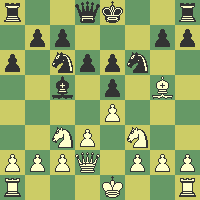
As Steinitz showed, there is no hurry to castle in a closed position. Black placidly restricts White's queen's knight.
9. h3 Qe7; 10. O-O h6; 11. Bh4 O-O-O!?
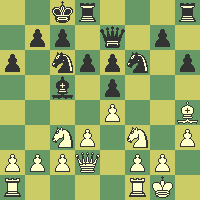
The tournament director, Ed Frumkin, was aghast at this, but it's perfectly consistent with my Steinitzian strategy. Black has advanced a pawn on the kingside and White's pieces there are targets. Naturally my attack will hit first, and it will be a doozy.
12. a3 g5; 13. Bg3 g4; 14. hg Ng4.
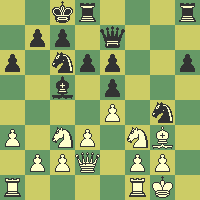
White can only counterattack on the queenside, but his attacking force is less impressive.
15. b4 Ba7; 16. b5 Nd4; 17. ba ba; 18. N:d4 B:d4.
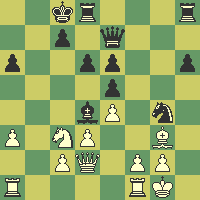
Black's attack is as threatening as ever. White can only hope to exploit Black's open queenside.
19. Rab1 h5; 20. Na4 h4; 21. Bh2?
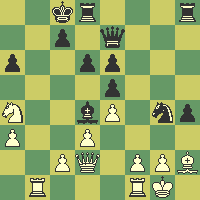
The only try was 21. Qa5!, but after 21... Qh7 White has no perpetual.
21... N:f2!
The pin decides.
22. Qa5.
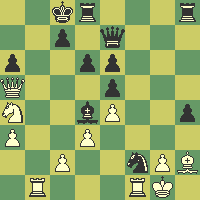
After 22. R:f2 Black can pile up on the pinned rook.
22... N:e4+.
I played this as if I was in a hurry to defend my queenside: a little giuoke.
23. Kh1?
White's usual foresight fails him. With 23. Rf2 White could go on fighting: 23... B:f2+; 24. Kf1 Qf8; 25. Ke2! Rg8; 26. Q:a6+ Kd7; 27. Rb7! Qh6! 28. Qb5+ Ke7; 29. R:c7+ Kf8; 30. Rf7+! K:f7; 31. Qb7+ Rd7 (hoping for 32. Q:d7+, losing); 32. Q:e4! But Black still wins: 32... R:g2!! 33. Bg1! R:g1; 34. K:f2 Qc1!
23... Ng3+ 0:1.
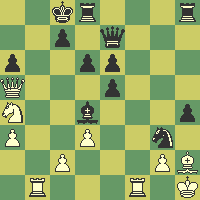
It's mate next move.